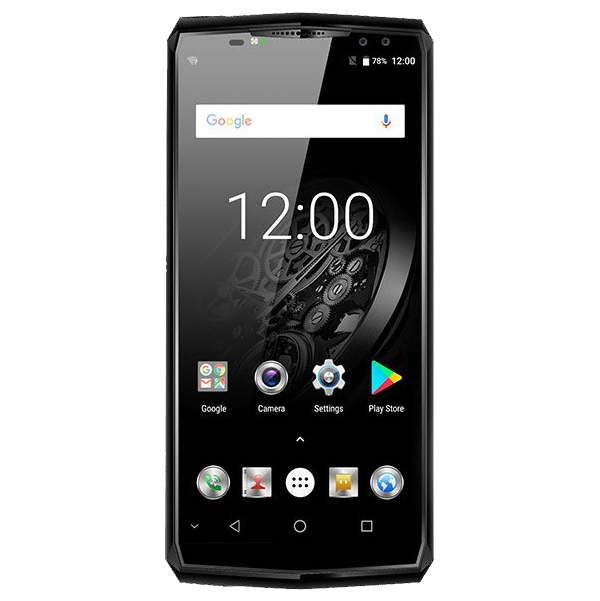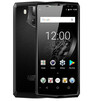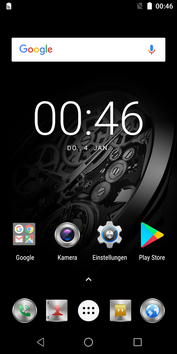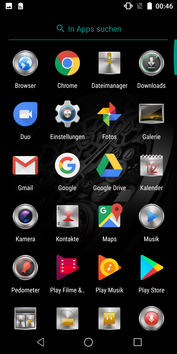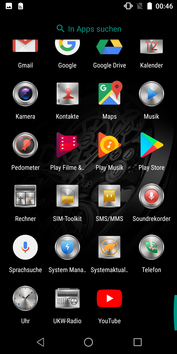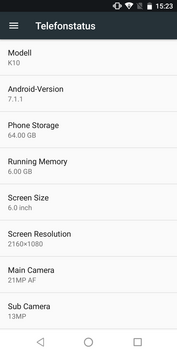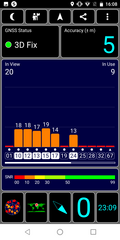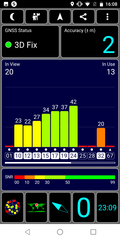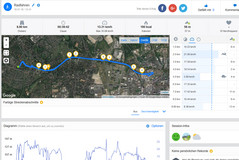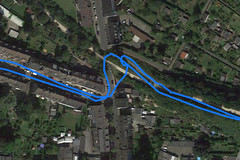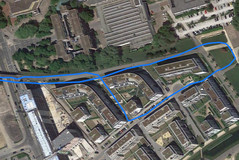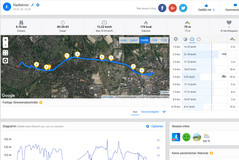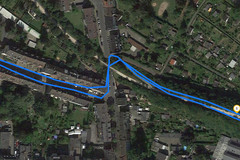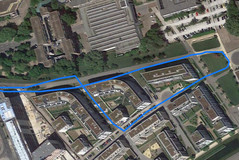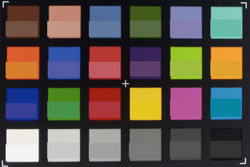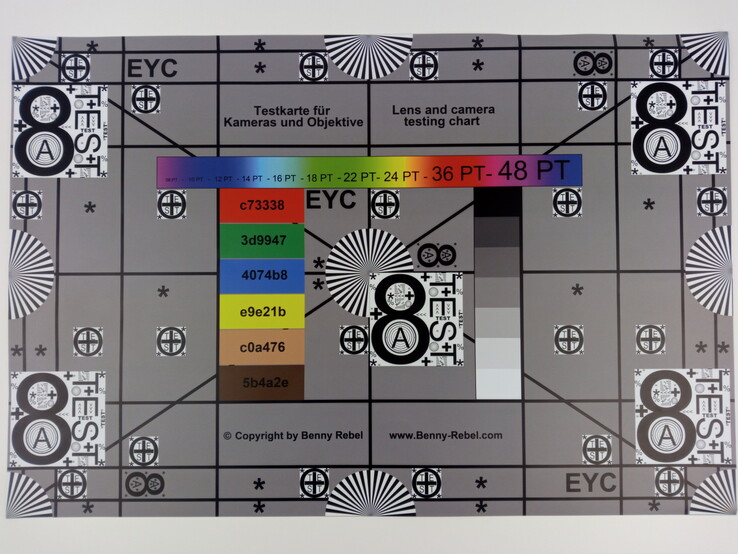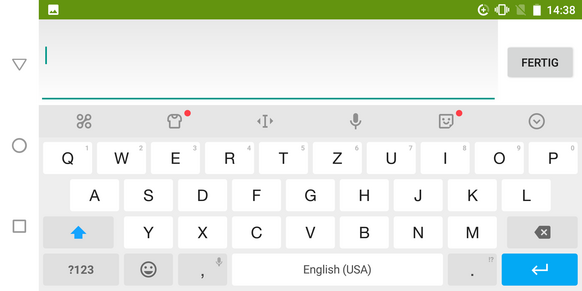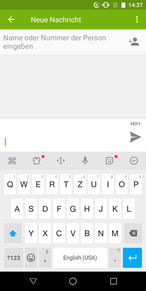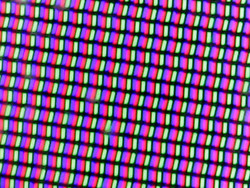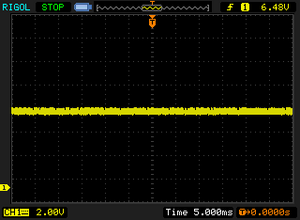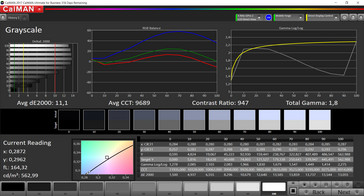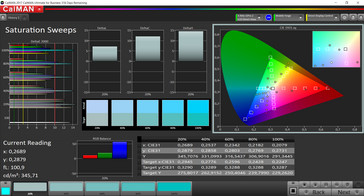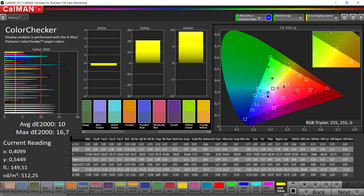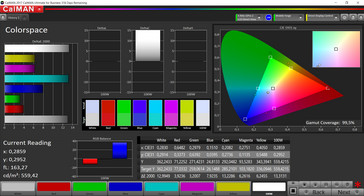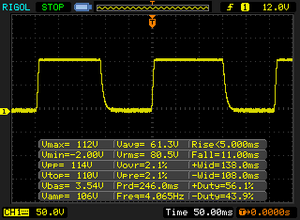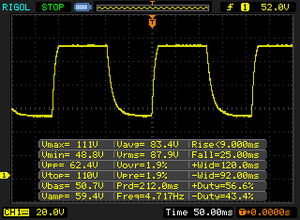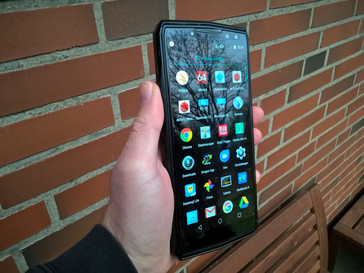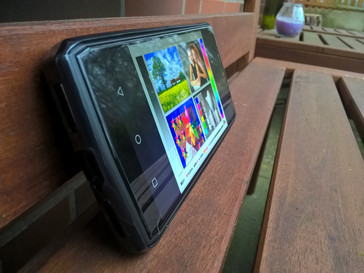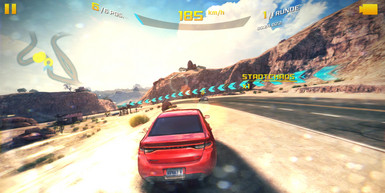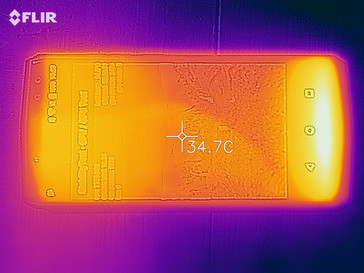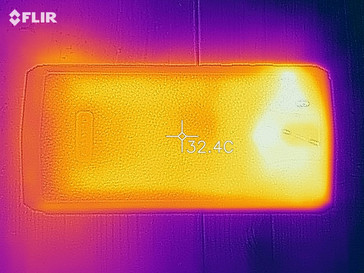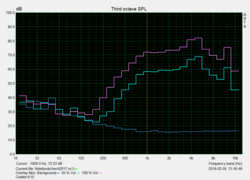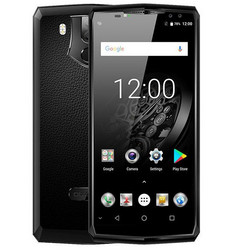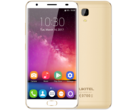Oukitel K10 Smartphone Review

In the past few years, the Chinese manufacturer Oukitel has become a well-known player in the smartphone market, and we have had quite a few Oukitel smartphones in review in the past ourselves. Common grounds for all Oukitel smartphones reviewed so far have been their size, weight, and low price. Performance was never a top priority for the manufacturer, but the price-performance ratio was very decent by and large nevertheless.
As it happens, these are our exact expectations of today’s review unit. Based on the MediaTek Helio P23 MT6763T, a relatively new octa-core SoC aimed primarily at mid-range Android smartphones with an ARM Mali-G71 MP2 GPU and access to 6 GB of RAM and 64 GB of onboard storage memory, should be more than sufficient for most users.
In order to get a more detailed and holistic impression of the Oukitel K10, we will be comparing it to devices of similar size, weight, and price; among others the HTC U Play, the Nomu S30, the Blackview BV9000, and the Huawei Mate 10 Lite.
Case
While the K10 is not specifically advertised as an outdoor smartphone, its sheer size and astonishingly rigid case can almost be considered evidence to the contrary. All four sides, including the top and the bottom feature a rippled strip to make sure the device remains safe and sound in hand. Visible screws on the sides leave us with the impression of a fairly robust case design, and its thickness of 13 mm (~0.5 in) is on a par with designated outdoor devices such as the Blackview B9000 Pro and the Nomus S30. The K10’s massive battery is the most likely reason for the bulky design, yet the case remains surprisingly handy and compact, thanks to its 18:9 display.
Thanks to this narrow display, the smartphone feels comfortable and natural despite its sheer size. Most comparable devices are half a centimeter (~0.2 in) wider. Its octagonal shape is another differentiating factor - granted, it is subject to personal taste, but a very welcome change to the monotony that is today’s smartphone market.
Connectivity
Our review unit came equipped with an 8-core Helio P23 MT6763T SoC by MediaTek, an ARM Mali-G71 MP2 GPU, and 6 GB of RAM. These specifications put the K10 right in the middle of the mid-range smartphone range, capable of running simple graphical applications. It features 64 GB of internal eMMC storage that can be expanded via a MicroSD card. If required, the MicroSD slot can take a second NanoSIM card instead.
We found it particularly commendable that the K10 comes with various USB-C dongles in the box, including a USB-C to USB-A, a USB-C to 3.5-mm headphone, and a USB-C to USB-A OTG adapter. The included 5V/5A charger takes around 2:15 hours to charge the 11,000 mAh battery from near empty to full.
In addition to Wi-Fi and Bluetooth 4.2, the K10 also supports NFC.
Software
The K10 came with Android 7.1.1 preloaded, and at the time of writing it was uncertain whether an Oreo update was in the making or not. The user interface is very clearly arranged, and aside from a few new icons there are no visible changes to the Android operating system. Users are thus getting an Android environment that they should be quite familiar with.
Communication and GPS
The Oukitel K10 supports LTE and connects to various 3G and even 2G networks, but while it does support LTE band 20, which is commonly used in Europe it does not support a single LTE band used in the United States or Canada. LTE performance was very decent, and data rates of 50-150 Mbit/s are achievable depending on cellular coverage.
Wi-Fi, on the other hand, turned out to be fairly slow, and the K10’s transfer rates were underwhelming and below average. At least the device supports NFC, which can be used for contactless payment or initiating data exchange between two devices. Other cellular options are not available.
| Networking | |
| iperf3 transmit AX12 | |
| HTC U Play | |
| Nomu S30 | |
| Blackview BV9000 Pro | |
| Huawei Mate 10 Lite | |
| Oukitel K10 | |
| iperf3 receive AX12 | |
| HTC U Play | |
| Blackview BV9000 Pro | |
| Nomu S30 | |
| Oukitel K10 | |
| Huawei Mate 10 Lite | |
GPS accuracy was top notch both indoors and outdoors, with an accuracy of up to 4 m (~13 ft) indoors. This does not leave much leeway for improved outdoor precision, and accordingly at just 3 m (~10 ft), it turned out to be very similar.
When comparing the K10 to the Garmin Edge 500 reference unit it did fairly well. Turns can be somewhat jagged occasionally, but tracking remained very decent by and large. After a recorded distance of 8.8 km (~5.5 miles) the deviation between the two devices was just 40 m (~130 ft). The GPS can thus keep up with professional units, and many competitors have achieved similar results.
Telephony & Call Quality
The K10 features Google’s well-known default telephone app. It worked very well, and we particularly liked the K10’s call quality. Voices were clear and understandable when used normally or put on speakerphone. Volume was high enough to remain usable even in noisy environments.
Cameras
The smartphone’s dual-camera features a 21 MP main sensor with an 8 MP sidekick for depth-of-field information and predictive autofocus capable of keeping moving objects in focus in burst mode. By apprehending the object’s movement based on the first photo, the software predicts the upcoming positions and shifts focus accordingly. Maximum camera resolution is 5,312x3,984 pixels, but despite this seemingly high resolution photos lacked detail, were not particularly sharp, and seemed to be quite pale to boot. Colors lacked depth and outside of the camera’s main focus the photos were sort of blurry and too dark overall. The camera is decent enough for occasional snapshots, but you should not expect too much of it.
The same can be said about the secondary front-facing 13 MP dual-camera backed by an 8 MP sensor. The fix-focus camera’s maximum resolution is 4,160x3,120, and it is even more sensitive to movement and poor lighting than the main shooter. Both cameras feature a number of presets, for example for portraits or panoramas. The camera app also includes a Pro mode, allowing for manual adjustment of ISO sensitivity and exposure.
When tested under controlled conditions in our lab, our initial outdoor impressions were confirmed. Generally speaking colors are too dark, although this was not the case for yellows and greens.
The test chart photo turned out too dark as well, especially around the center of the photo. And while the photo gains brightness towards the edges, it loses focus at the same time.
Accessories and Warranty
Oukitel includes a number of accessories with the K10. In addition to aforementioned USB-C adapters the box also contains a SIM tool and a protective silicone case. The case completely encloses the phone, but does not impact the side buttons which remain easily usable.
We found no other accessories made specifically for the K10 by Oukitel. Extended warranties are also unavailable, and most of the time, buyers will be restricted to seller warranties anyway. Most resellers offer a 12-month limited warranty excluding battery and accessories. Please see our Guarantees, Return Policies and Warranties FAQ for country-specific information.
Input Devices & Handling
The K10’s onscreen keyboard worked remarkably well in portrait mode thanks to its slender 18:9 display format. The exact opposite must be said about landscape mode - the individual keys were spaced too far apart, and we had trouble reaching the middle of the screen with our thumbs. Swipe functionality is included and activated by default, but we have had major trouble trying to install a German language pack for this feature. Accordingly, the suggestions were rather silly.
Overall, our review unit’s touch screen responded and reacted reliably and fast to input, although we must add that the screen surface presented us with a tiny bit of resistance that we had to overcome with our fingertips first. There was no noticeable input lag, and the K10 supports 3-finger gestures for launching the camera app or taking a screenshot. Gesture detection was reliable and fast, and input lag was noticeable yet negligible.
The fingerprint reader must be set up in the settings application, and once configured; using it was quick and painless. Finding the right spot at the rear of the phone takes some getting used to. Alternatively, the phone also offers facial detection via Face-ID. Most of the time, it took two attempts to unlock the device, but in return this feature worked surprisingly well even in low-light conditions.
Display
| |||||||||||||||||||||||||
Brightness Distribution: 92 %
Center on Battery: 561 cd/m²
Contrast: 967:1 (Black: 0.58 cd/m²)
ΔE ColorChecker Calman: 10 | ∀{0.5-29.43 Ø4.78}
ΔE Greyscale Calman: 11.1 | ∀{0.09-98 Ø5}
Gamma: 1.8
CCT: 9689 K
| Oukitel K10 IPS, 2160x1080, 6" | HTC U Play Super LCD, 1920x1080, 5.2" | Huawei Mate 10 Lite IPS, 2160x1080, 5.9" | Nomu S30 IPS, 1920x1080, 5.5" | Blackview BV9000 Pro IPS, 1440x720, 5.7" | |
|---|---|---|---|---|---|
| Screen | 28% | 27% | 16% | 19% | |
| Brightness middle (cd/m²) | 561 | 424 -24% | 467 -17% | 423 -25% | 621 11% |
| Brightness (cd/m²) | 541 | 432 -20% | 457 -16% | 421 -22% | 598 11% |
| Brightness Distribution (%) | 92 | 90 -2% | 89 -3% | 93 1% | 91 -1% |
| Black Level * (cd/m²) | 0.58 | 0.25 57% | 0.3 48% | 0.26 55% | 0.64 -10% |
| Contrast (:1) | 967 | 1696 75% | 1557 61% | 1627 68% | 970 0% |
| Colorchecker dE 2000 * | 10 | 5.7 43% | 5 50% | 7.8 22% | 5.5 45% |
| Colorchecker dE 2000 max. * | 16.7 | 10.8 35% | 8.2 51% | 14.5 13% | 10 40% |
| Greyscale dE 2000 * | 11.1 | 4.1 63% | 6.1 45% | 9.8 12% | 5.1 54% |
| Gamma | 1.8 122% | 2.32 95% | 2.15 102% | 2.32 95% | 2.52 87% |
| CCT | 9689 67% | 7359 88% | 7961 82% | 9828 66% | 7362 88% |
* ... smaller is better
Screen Flickering / PWM (Pulse-Width Modulation)
| Screen flickering / PWM not detected | |||
In comparison: 53 % of all tested devices do not use PWM to dim the display. If PWM was detected, an average of 8108 (minimum: 5 - maximum: 343500) Hz was measured. | |||
Its black level of 0.58 was very high, and as a result, blacks looked grayish and pale. It also affected colors that seemed to be covered by a bloom, and to add insult to injury the display suffered from a low contrast ratio and high DeltaE deviations.
We have to admit though that this sounds worse than it really was. Subjectively, the K10’s display was clear and just slightly on the cool side. After a short while, these issues were only noticeable when comparing it to a different smartphone display side-by-side.
Display Response Times
| ↔ Response Time Black to White | ||
|---|---|---|
| 16 ms ... rise ↗ and fall ↘ combined | ↗ 5 ms rise | |
| ↘ 11 ms fall | ||
| The screen shows good response rates in our tests, but may be too slow for competitive gamers. In comparison, all tested devices range from 0.1 (minimum) to 240 (maximum) ms. » 36 % of all devices are better. This means that the measured response time is better than the average of all tested devices (20.2 ms). | ||
| ↔ Response Time 50% Grey to 80% Grey | ||
| 34 ms ... rise ↗ and fall ↘ combined | ↗ 9 ms rise | |
| ↘ 25 ms fall | ||
| The screen shows slow response rates in our tests and will be unsatisfactory for gamers. In comparison, all tested devices range from 0.165 (minimum) to 636 (maximum) ms. » 45 % of all devices are better. This means that the measured response time is similar to the average of all tested devices (31.6 ms). | ||
Performance
Equipped with a Helio P23 MT6763T mid-range SoC by MediaTek, our review unit featured eight cores organized in two quad-core clusters running at 2.3 and 1.65 GHz, respectively. The SoC was specifically designed for smartphones and tablets running Android.
Given that we do not have any other devices powered by that particular SoC, the smartphones that we chose for the sake of this comparison were either slightly faster or slightly slower than our review unit. CPU performance was thus fairly flat throughout the test group, GPU and system performance on the other hand were not. Despite the fact that the ARM Mali-G71 MP2 GPU is only capable of basic 3D tasks, it still managed to outperform most competitors.
We were unable to run some benchmarks on our review unit, among others GeekBench 4, due to an ostensibly missing internet connection and AndeBenchPro, due to constant crashes while running.
| AnTuTu v6 - Total Score (sort by value) | |
| Oukitel K10 | |
| HTC U Play | |
| Huawei Mate 10 Lite | |
| Nomu S30 | |
| Blackview BV9000 Pro | |
| PCMark for Android | |
| Work performance score (sort by value) | |
| Oukitel K10 | |
| HTC U Play | |
| Huawei Mate 10 Lite | |
| Nomu S30 | |
| Blackview BV9000 Pro | |
| Work 2.0 performance score (sort by value) | |
| Oukitel K10 | |
| Huawei Mate 10 Lite | |
| Nomu S30 | |
| Blackview BV9000 Pro | |
| Geekbench 4.4 | |
| 64 Bit Single-Core Score (sort by value) | |
| Huawei Mate 10 Lite | |
| Blackview BV9000 Pro | |
| 64 Bit Multi-Core Score (sort by value) | |
| Huawei Mate 10 Lite | |
| Blackview BV9000 Pro | |
| Compute RenderScript Score (sort by value) | |
| Huawei Mate 10 Lite | |
| Blackview BV9000 Pro | |
| GFXBench (DX / GLBenchmark) 2.7 | |
| T-Rex Onscreen (sort by value) | |
| Oukitel K10 | |
| HTC U Play | |
| Huawei Mate 10 Lite | |
| Nomu S30 | |
| Blackview BV9000 Pro | |
| 1920x1080 T-Rex Offscreen (sort by value) | |
| Oukitel K10 | |
| HTC U Play | |
| Huawei Mate 10 Lite | |
| Nomu S30 | |
| Blackview BV9000 Pro | |
| GFXBench 3.0 | |
| on screen Manhattan Onscreen OGL (sort by value) | |
| Oukitel K10 | |
| HTC U Play | |
| Huawei Mate 10 Lite | |
| Nomu S30 | |
| Blackview BV9000 Pro | |
| 1920x1080 1080p Manhattan Offscreen (sort by value) | |
| Oukitel K10 | |
| HTC U Play | |
| Huawei Mate 10 Lite | |
| Nomu S30 | |
| Blackview BV9000 Pro | |
| GFXBench 3.1 | |
| on screen Manhattan ES 3.1 Onscreen (sort by value) | |
| Oukitel K10 | |
| HTC U Play | |
| Huawei Mate 10 Lite | |
| Nomu S30 | |
| Blackview BV9000 Pro | |
| 1920x1080 Manhattan ES 3.1 Offscreen (sort by value) | |
| Oukitel K10 | |
| HTC U Play | |
| Huawei Mate 10 Lite | |
| Nomu S30 | |
| Blackview BV9000 Pro | |
| GFXBench | |
| on screen Car Chase Onscreen (sort by value) | |
| Oukitel K10 | |
| HTC U Play | |
| Huawei Mate 10 Lite | |
| Nomu S30 | |
| Blackview BV9000 Pro | |
| 1920x1080 Car Chase Offscreen (sort by value) | |
| Oukitel K10 | |
| HTC U Play | |
| Huawei Mate 10 Lite | |
| Nomu S30 | |
| Blackview BV9000 Pro | |
| Lightmark - 1920x1080 1080p (sort by value) | |
| Oukitel K10 | |
| Basemark ES 3.1 / Metal - offscreen Overall Score (sort by value) | |
| Oukitel K10 | |
| AnTuTu v7 - Total Score (sort by value) | |
| Oukitel K10 | |
The K10’s web browsing performance leaves a lot to be desired; in most benchmarks, it ended up in the last place. Subjectively, we are able to confirm these results - websites loaded noticeably slower than we were used to.
| JetStream 1.1 - Total Score | |
| Blackview BV9000 Pro (Chrome Mobile 53) | |
| Huawei Mate 10 Lite (Chrome 62) | |
| Nomu S30 (Chrome 57) | |
| HTC U Play (Chrome 56) | |
| Oukitel K10 (Standard Browser 7.1.1) | |
| Octane V2 - Total Score | |
| Huawei Mate 10 Lite (Chrome 62) | |
| Blackview BV9000 Pro (Chrome Mobile 53) | |
| Nomu S30 (Chrome 57) | |
| HTC U Play (Chrome 56) | |
| Oukitel K10 (Standard Browser 7.1.1) | |
| Mozilla Kraken 1.1 - Total | |
| Nomu S30 (Chrome 57) | |
| Oukitel K10 (Standard Browser 7.1.1) | |
| Blackview BV9000 Pro (Chrome Mobile 53) | |
| HTC U Play (Chrome 56) | |
| Huawei Mate 10 Lite (Chrome 62) | |
| WebXPRT 2015 - Overall | |
| Huawei Mate 10 Lite (Chrome 62) | |
| Oukitel K10 (Standard Browser 7.1.1) | |
* ... smaller is better
Internal storage was fairly fast, and 58 GB of the 64 GB that the phone is equipped with was available to us after first startup. This should be sufficient enough for storing applications, photos, and music. Storage memory is expandable via MicroSD card, and when benchmarked with our Toshiba Exceria Pro M501 reference card, the K10’s card reader turned out to be much faster than all its competitors. The memory card can be formatted as internal storage for storing apps and photos. Formatted as such, it will only be usable in the K10. In return, when formatted as a removable storage it cannot be used for storing applications.
| Oukitel K10 | HTC U Play | Huawei Mate 10 Lite | Nomu S30 | Blackview BV9000 Pro | |
|---|---|---|---|---|---|
| AndroBench 3-5 | -17% | -33% | -43% | -9% | |
| Sequential Read 256KB (MB/s) | 291.5 | 197.3 -32% | 286.8 -2% | 242 -17% | 244.7 -16% |
| Sequential Write 256KB (MB/s) | 213.3 | 135.5 -36% | 99.8 -53% | 194.9 -9% | 174.6 -18% |
| Random Read 4KB (MB/s) | 52.2 | 32 -39% | 31.5 -40% | 27.99 -46% | 72.6 39% |
| Random Write 4KB (MB/s) | 22.88 | 52.7 130% | 15.26 -33% | 8.84 -61% | 12.72 -44% |
| Sequential Read 256KB SDCard (MB/s) | 82.2 ? | 36.8 ? -55% | 69.1 ? -16% | 36.94 ? -55% | 76.7 ? -7% |
| Sequential Write 256KB SDCard (MB/s) | 74.7 ? | 23.6 ? -68% | 35.35 ? -53% | 21.52 ? -71% | 68.5 ? -8% |
Gaming
The K10’s ARM Mali-G71 MP2 entry-level GPU is only capable of basic 3D tasks and casual gaming. The games we ran on the K10 were smooth overall, but suffered from pretty long launch and loading times. When playing “Asphalt 8”, the gyroscope seemed to lag behind significantly, and more often than not we went off track during fast turns.
| Dead Trigger 2 | |||
| Settings | Value | ||
| high | 46 fps | ||
| Asphalt 8: Airborne | |||
| Settings | Value | ||
| high | 23 fps | ||
| very low | 29 fps | ||
Emissions
Temperature
In everyday use, the K10 remained fairly cool and only occasionally heated up above ambient temperature levels. Under load, surface temperatures never exceeded 37 °C (~99 °F). Charging the phone with the included 5 A fast charger heated up the phone’s rear side somewhat, yet even so it never got hot but just warm.
(+) The maximum temperature on the upper side is 37.4 °C / 99 F, compared to the average of 35.2 °C / 95 F, ranging from 21.9 to 247 °C for the class Smartphone.
(+) The bottom heats up to a maximum of 29 °C / 84 F, compared to the average of 34 °C / 93 F
(+) In idle usage, the average temperature for the upper side is 28.9 °C / 84 F, compared to the device average of 32.9 °C / 91 F.
Speakers
The Oukitel K10’s speakers were acceptable. If you do not have high expectations, listening to music every now and then can be enjoyable. Thanks to its high maximum volume and its fairly balanced mids and highs the device was ideal for voice transmission/reception: voices were loud and clear, even in noisy environments.
Oukitel K10 audio analysis
(+) | speakers can play relatively loud (87.6 dB)
Bass 100 - 315 Hz
(-) | nearly no bass - on average 34.9% lower than median
(±) | linearity of bass is average (7.7% delta to prev. frequency)
Mids 400 - 2000 Hz
(±) | reduced mids - on average 5.3% lower than median
(+) | mids are linear (6.4% delta to prev. frequency)
Highs 2 - 16 kHz
(±) | higher highs - on average 6.1% higher than median
(+) | highs are linear (6.4% delta to prev. frequency)
Overall 100 - 16.000 Hz
(±) | linearity of overall sound is average (25.3% difference to median)
Compared to same class
» 62% of all tested devices in this class were better, 7% similar, 31% worse
» The best had a delta of 11%, average was 35%, worst was 134%
Compared to all devices tested
» 77% of all tested devices were better, 5% similar, 18% worse
» The best had a delta of 4%, average was 24%, worst was 134%
Apple iPhone X audio analysis
(+) | speakers can play relatively loud (85.3 dB)
Bass 100 - 315 Hz
(±) | reduced bass - on average 14.9% lower than median
(±) | linearity of bass is average (9.4% delta to prev. frequency)
Mids 400 - 2000 Hz
(+) | balanced mids - only 3.4% away from median
(+) | mids are linear (5.1% delta to prev. frequency)
Highs 2 - 16 kHz
(±) | higher highs - on average 7.3% higher than median
(+) | highs are linear (4.6% delta to prev. frequency)
Overall 100 - 16.000 Hz
(±) | linearity of overall sound is average (19% difference to median)
Compared to same class
» 24% of all tested devices in this class were better, 9% similar, 67% worse
» The best had a delta of 11%, average was 35%, worst was 134%
Compared to all devices tested
» 44% of all tested devices were better, 8% similar, 48% worse
» The best had a delta of 4%, average was 24%, worst was 134%
frequency diagram (checkboxes selectable/deselectable!)
Power Management
Power Consumption
Compared to the other devices in our test group, the K10 was a fairly energy efficient device, particularly under load. The 25-W charger is amply dimensioned and capable of charging the smartphone’s battery from near empty to full in 2:15 hours. After one hour, the charge level on the battery reads 50%.
| Off / Standby | |
| Idle | |
| Load |
|
Key:
min: | |
| Oukitel K10 11000 mAh | HTC U Play 2500 mAh | Huawei Mate 10 Lite 3340 mAh | Nomu S30 5000 mAh | Blackview BV9000 Pro 4180 mAh | |
|---|---|---|---|---|---|
| Power Consumption | -6% | -2% | -14% | -19% | |
| Idle Minimum * (Watt) | 0.89 | 0.92 -3% | 0.87 2% | 0.93 -4% | 1.04 -17% |
| Idle Average * (Watt) | 2.48 | 1.84 26% | 2.14 14% | 2.31 7% | 2.14 14% |
| Idle Maximum * (Watt) | 2.52 | 2 21% | 2.16 14% | 2.35 7% | 2.17 14% |
| Load Average * (Watt) | 3.13 | 4.3 -37% | 3.7 -18% | 4.57 -46% | 5.11 -63% |
| Load Maximum * (Watt) | 4.5 | 6.2 -38% | 5.48 -22% | 6.1 -36% | 6.37 -42% |
* ... smaller is better
Battery Life
According to Oukitel, the K10’s battery life is supposed to be impressive and unrivaled. In our real-world Wi-Fi test simulating surfing the web by loading different websites with the display always on and automatic brightness enabled, the K10 lasted for well over 27 hours. After 1,632 minutes (~27:20 hrs), the phone went into low power mode but did not turn off just yet. At that particular moment, the battery level still claimed 6% remaining charge. No other device in our test group lasted this long, and the manufacturer’s battery life claims seem realistic by and large.
| Oukitel K10 11000 mAh | HTC U Play 2500 mAh | Huawei Mate 10 Lite 3340 mAh | Nomu S30 5000 mAh | Blackview BV9000 Pro 4180 mAh | |
|---|---|---|---|---|---|
| Battery runtime | -71% | -68% | -49% | -64% | |
| WiFi v1.3 (h) | 27.2 | 7.9 -71% | 8.7 -68% | 13.9 -49% | 9.7 -64% |
| Reader / Idle (h) | 21.7 | 19.2 | 19 | ||
| H.264 (h) | 8.6 | 8.4 | |||
| Load (h) | 3.7 | 3.7 | 4.6 |
Pros
Cons
Verdict
Our test revealed that the Oukitel K10 offers the performance of a regular average mid-range smartphone. CPU and GPU are capable of running most apps sufficiently fast. Games are mostly smooth, but suffer from long launch and loading times. We applaud the fact that the phone supports either two SIM cards or a single SIM card plus a MicroSD card for storage expansion purposes. On the other hand, 64 GB of internal storage may not be enough for some users with significant storage requirements and the need to use two SIM cards at the same time.
If you prefer battery life over design, the K10 is the right choice. Apart from its impressive stamina it is an average mid-range smartphone with enough oomph for everyday tasks.
Potential buyers who prefer stamina over design and size will have a very hard time finding a longer-running smartphone than the K10, and performance is not half bad either. Most users will be satisfied with what the K10 has to offer.
Oukitel K10
- 02/20/2018 v6 (old)
Mike Wobker




